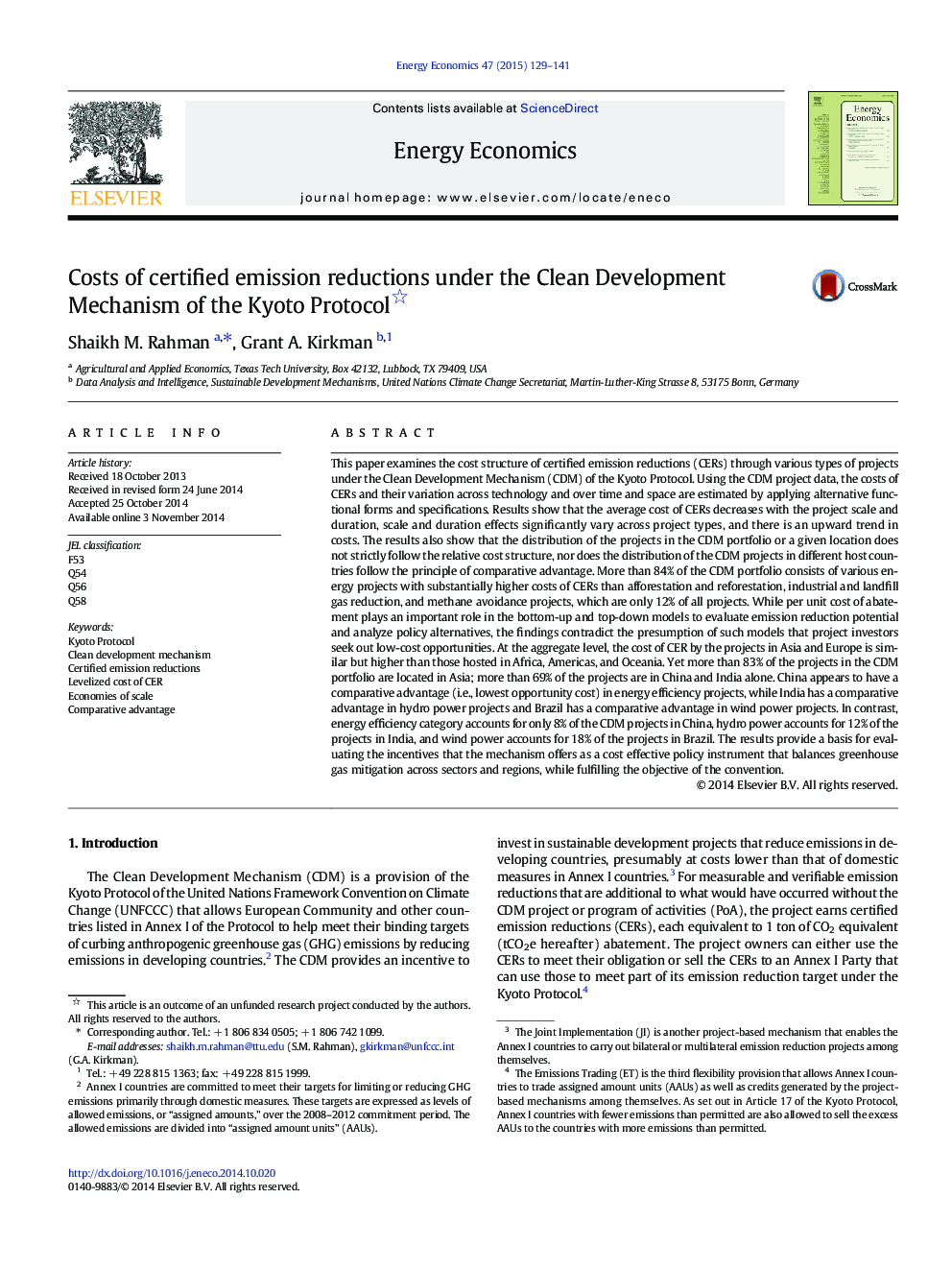| کد مقاله | کد نشریه | سال انتشار | مقاله انگلیسی | نسخه تمام متن |
|---|---|---|---|---|
| 5064590 | 1476716 | 2015 | 13 صفحه PDF | دانلود رایگان |
- As of Jan. 2014, 8,744 projects are at some stage of the CDM project cycle. At their full potential, those will reduce 1.1 BtCO2e emissions per year.
- Most of the CDM project activities are renewable resource based and a large majority of those are located in China and India.
- Per unit costs of generating CERs were not lower in the places where investments most often took place or where most of the investments were made At the mean project scales, the average cost of CER is the highest for transportation projects, followed by fossil fuel switch, solar power, energy efficiency, wind power, biomass energy, hydro power, methane avoidance, landfill gas, afforestation and reforestation, and industrial gas reduction projects.
- The types of projects that attracted larger amount of investments, were not the projects associated with lower per unit cost of CERs.
- Per unit costs of generating CERs were not lower in the places where investments most often took place or where most of the investments were made.
This paper examines the cost structure of certified emission reductions (CERs) through various types of projects under the Clean Development Mechanism (CDM) of the Kyoto Protocol. Using the CDM project data, the costs of CERs and their variation across technology and over time and space are estimated by applying alternative functional forms and specifications. Results show that the average cost of CERs decreases with the project scale and duration, scale and duration effects significantly vary across project types, and there is an upward trend in costs. The results also show that the distribution of the projects in the CDM portfolio or a given location does not strictly follow the relative cost structure, nor does the distribution of the CDM projects in different host countries follow the principle of comparative advantage. More than 84% of the CDM portfolio consists of various energy projects with substantially higher costs of CERs than afforestation and reforestation, industrial and landfill gas reduction, and methane avoidance projects, which are only 12% of all projects. While per unit cost of abatement plays an important role in the bottom-up and top-down models to evaluate emission reduction potential and analyze policy alternatives, the findings contradict the presumption of such models that project investors seek out low-cost opportunities. At the aggregate level, the cost of CER by the projects in Asia and Europe is similar but higher than those hosted in Africa, Americas, and Oceania. Yet more than 83% of the projects in the CDM portfolio are located in Asia; more than 69% of the projects are in China and India alone. China appears to have a comparative advantage (i.e., lowest opportunity cost) in energy efficiency projects, while India has a comparative advantage in hydro power projects and Brazil has a comparative advantage in wind power projects. In contrast, energy efficiency category accounts for only 8% of the CDM projects in China, hydro power accounts for 12% of the projects in India, and wind power accounts for 18% of the projects in Brazil. The results provide a basis for evaluating the incentives that the mechanism offers as a cost effective policy instrument that balances greenhouse gas mitigation across sectors and regions, while fulfilling the objective of the convention.
Journal: Energy Economics - Volume 47, January 2015, Pages 129-141
